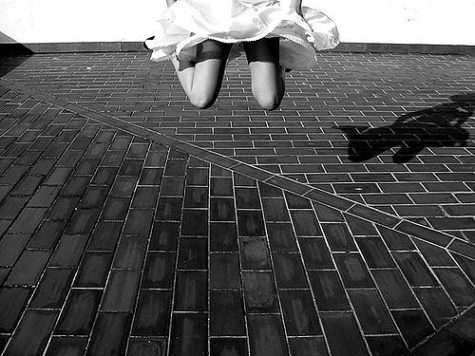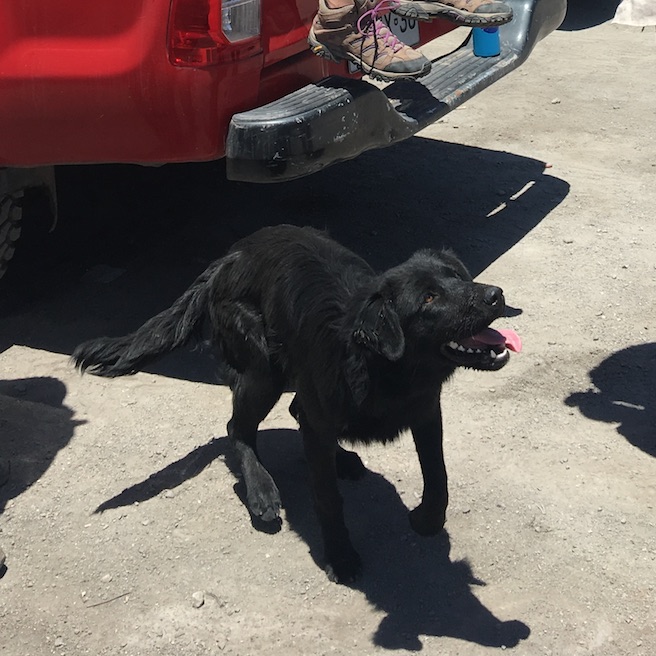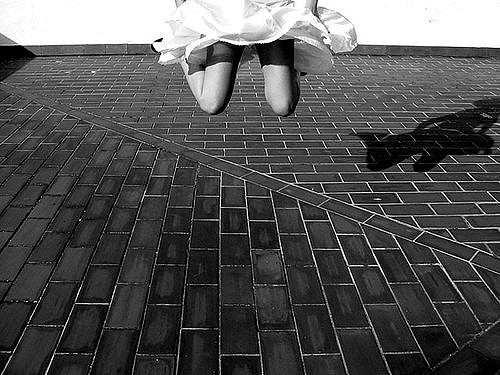 When Matt McCorkle was growing up in La Crosse, Wisconsin, his dad often listened to the automated broadcasts from the local NOAA weather station. “The soundscape of my childhood was that little weather robot,” McCorkle remembers. Now an audio engineer and sound designer, McCorkle has worked with musicians including John Legend and Laura Izibor, and was a founding member of the classical-music comedy collective CDZA. He still listens to the weather, however: his latest project, a web application called the Weather Machine, riffs on his childhood soundscape by turning weather data into sound.
When Matt McCorkle was growing up in La Crosse, Wisconsin, his dad often listened to the automated broadcasts from the local NOAA weather station. “The soundscape of my childhood was that little weather robot,” McCorkle remembers. Now an audio engineer and sound designer, McCorkle has worked with musicians including John Legend and Laura Izibor, and was a founding member of the classical-music comedy collective CDZA. He still listens to the weather, however: his latest project, a web application called the Weather Machine, riffs on his childhood soundscape by turning weather data into sound.
 Decision fatigue is real. Decision fatigue is the mental exhaustion and reduced willpower that comes from making many, many micro-calls every day. My modern American lifestyle, with its endless variety of choices, from a hundred kinds of yogurt at the grocery store to the more than 4,000 movies available on Netflix, breeds decision fatigue. But it is my kids that really fry my brain. At last I understand that my own mother’s penchant for saying “ask your father” wasn’t deference to her then husband but the most desperate sort of buck-passing–especially since my father dealt with decision fatigue by saying yes to pretty much everything, which is how my brothers and I ended up taking turns rolling down the steep hill we grew up on inside an aluminum trash can.
Decision fatigue is real. Decision fatigue is the mental exhaustion and reduced willpower that comes from making many, many micro-calls every day. My modern American lifestyle, with its endless variety of choices, from a hundred kinds of yogurt at the grocery store to the more than 4,000 movies available on Netflix, breeds decision fatigue. But it is my kids that really fry my brain. At last I understand that my own mother’s penchant for saying “ask your father” wasn’t deference to her then husband but the most desperate sort of buck-passing–especially since my father dealt with decision fatigue by saying yes to pretty much everything, which is how my brothers and I ended up taking turns rolling down the steep hill we grew up on inside an aluminum trash can.
I decided to write down every question that required a decision that my my two kids asked me during a single day. This doesn’t include simple requests for information like “how do you spell ‘secret club’?” or “what is the oldest animal in the world?” or the perennial favorite, “why do people have to die?” Recording ALL the questions two kids ask in a day would be completely intractable. So, limiting myself to just those queries that required a decision, here are the results.
 Greetings, Folks! Here’s what’s on offer from this past week:
Greetings, Folks! Here’s what’s on offer from this past week:
I can’t tell you how much I love this post from Ann. It’s about a metaphor related to gravity, or, really, not-quite gravity, what she describes as “still grounded but hair stuck straight out about to lift off….” Nice!
Then Rebecca takes us on a walk with the diverse and lovable stray dogs of Chile, charmers, every one.
Jessa considers Robert Boyle’s “Desiderata”, a 17th Century wish list of scientific breakthroughs, and provides an LOL update on how we’ve done so far ticking off the goals. (Good drugs: We’ve got that one covered.)
Sally recalled, in a redux, a fall into the Thames, and open wound, and a whirlwind trip through the toxic history of London’s famed public sewer. (Hint: Don’t drink the water.)
And to end the work week, I (Jenny) shared thoughts on the ways we writers build characters in science stories—with some kind help and examples from my fellow LWONers. Watch out for those excess adjectives, is what we’re sayin’.
 Describing people, actual people you’ve sat across from and interviewed, can be really hard to do well. We writers keep trying, with mixed results.
Describing people, actual people you’ve sat across from and interviewed, can be really hard to do well. We writers keep trying, with mixed results.
But it’s worth the effort. Here’s what I think: Especially in a tough science article, getting to know people—by way of a simple “tidy brown beard” (though I’d vote to use physical traits sparingly), a telling quote, or, beautifully, by “a stride that [gives] the impression of imminent flight” (from a recent New Yorker article)—helps humanize our subjects and adds reader-sustaining oxygen to our prose. The neurologist tapping her index finger against her head for emphasis. The archaeologist’s jaw muscles dancing under the skin as he concentrates. These might be nice and even useful to share, if they don’t feel burdensome where they fall.
I appreciate writers who neatly weave illustrative words or phrases into a sentence without them jarring the reader; they’re integral, not extra. Descriptions of people can also be “chunkified”—a bigger commitment of real estate—especially in a profile. I like graphs like this one from another New Yorker piece, about Paul and Patricia Churchland (a couple studying the relationship between the brain and conscious experience). Few words speak to physical traits, but the picture is clear:
Pat is constantly in motion, throwing the ball, stepping backward, rubbing her hands together, walking forward in a vigorous, twitchy way. She has pale eyes, a sharp chin, and the crisp, alert look of someone who likes being outside in the cold. (Even when it is sunny, she looks as though she were enjoying a bracing wind.) She seems younger than she is: she has the anxious vitality of a person driven to prove herself—the first to jump off a bridge into freezing water. Paul stands heavily, his hands in his pockets. He is still. He nudges at a stone with his foot. He looks up and smiles at his wife’s back. He has a thick beard. He looks like the sort of person who finds it soothing to chop his own wood (and in fact he is that sort of person). (Feb 2007)
This post first ran November 30, 2011.
Last week, I fell in the Thames. I only fell in up to my thighs, but the gaping, bleeding puncture on my shin, inside which I could see geologic-looking layers of anatomy — that was a bad sign.
So I found myself at the A&E (that’s ER to you, fellow ‘Mericans) at 4 in the morning in Hackney, where everyone was bored by my lack of gunshot wounds. Until, that is, I revealed that I’d taken a dip in the Thames. Then, even hardened nurses blanched and rushed off to confer with other medical professionals.
As the morning wore on and I kept seeing those expressions of pure horror every time I pointed at my leg and said the word “Thames,” I started to get pretty well creeped out. It culminated with the nice NHS doctor lady giving me my marching orders.
“If you see any red streaks, if you get any shooting pains in your leg, or anything feels wrong, come back immediately,” she advised, eyeing my bandage warily. “No one’s going to mind. Just tell them you’ve had your leg in the Thames.”
I started doing some Google-based investigation. Just what was so bad about inviting some Thames water into my gaping, bleeding flesh? My findings led me to conclude that my leg was either about to shrivel up and fall off, or spontaneously sprout 8 smaller legs. Or eyes.

In September 2000, the UN came up with eight Millenium Development Goals. Things like solving malaria and reducing infant mortality. Perhaps out of despair for the scale of these problems–but I fear out of something worse in me–I show no signs of dedicating my life to such noble goals. They’re more important than anything I’m doing, and yet I can’t hold them in my mind for more than a few seconds before I tire of the earnestness and squareness of the whole thing. I do feel pretty strongly about war, but that’s not on the list.
I can, however, get behind the general idea of setting goals as a species. For instance, I’ve written and spoken extensively about the idea of lengthening the effective human lifespan by reducing our need for sleep. One of DARPA’s goals is “to enable soldiers to stay awake, alert, and effective for up to seven consecutive days without suffering any deleterious mental or physical effects and without using any of the current generation of stimulants.” That’s a goal I would rather see made collectively, for any of us civilians who wish it.
So you can imagine my delight when I came across a post on BoingBoing about Robert Boyle’s “Desiderata”, a 17th Century wish list of scientific breakthroughs. Though still working out things like his eponymous Boyle’s Law–the rule that pressure and volume are inversely proportional–he had the imagination to set some millennial goals of his own. Continue reading

I believe in a heaven for all dogdom
where my dog waits for my arrival
waving his fan-like tail in friendship.
~ Pablo Neruda
When you land in Chile, the first thing you notice is the color of the sky. An easier thing to describe is the second thing you notice: The dogs. The country is full of them. How had I forgotten?
At the airport; on the street; in patches of shade; along medians; inside human-built, open-access doghouses erected on sidewalks and in parks; on the innumerable anonymous beaches: Look for approximately six seconds, and you will find quiltro. This word is Chilean, not Spanish, and refers to any stray mongrel dogs that take up residence someplace and are welcomed, not necessarily treated as nuisances.
The dogs are one of my favorite things about Chile. Continue reading
 A neighborhood kid, maybe 10 years old, doesn’t have the usual relationship with gravity. I know it’s her even when I can’t see her clearly by the way she moves through space: even when she’s not running, just walking, she looks like she might re-connect with the earth but also she might not. She reminds me of the young dog who blew past me on my walk yesterday, ears back, head down, feet folded under its body and more off the ground than on. She reminds me of the ballet dancer who was asked how he managed such high, long jumps and who answered, “I just go up in the air and stay there a while.”
A neighborhood kid, maybe 10 years old, doesn’t have the usual relationship with gravity. I know it’s her even when I can’t see her clearly by the way she moves through space: even when she’s not running, just walking, she looks like she might re-connect with the earth but also she might not. She reminds me of the young dog who blew past me on my walk yesterday, ears back, head down, feet folded under its body and more off the ground than on. She reminds me of the ballet dancer who was asked how he managed such high, long jumps and who answered, “I just go up in the air and stay there a while.”
I was interviewing an astrophysicist about the haloes of gas that surround galaxies, about the arguments over whether the gas was drifting down into the galaxies or just hanging up in space and staying there a while. She said, “Matt thinks the halo clouds are sub-virial.” Sub-virial. I hadn’t heard that before, I could guess what it meant, and I’ve been looking for that word for my whole life. Continue reading
